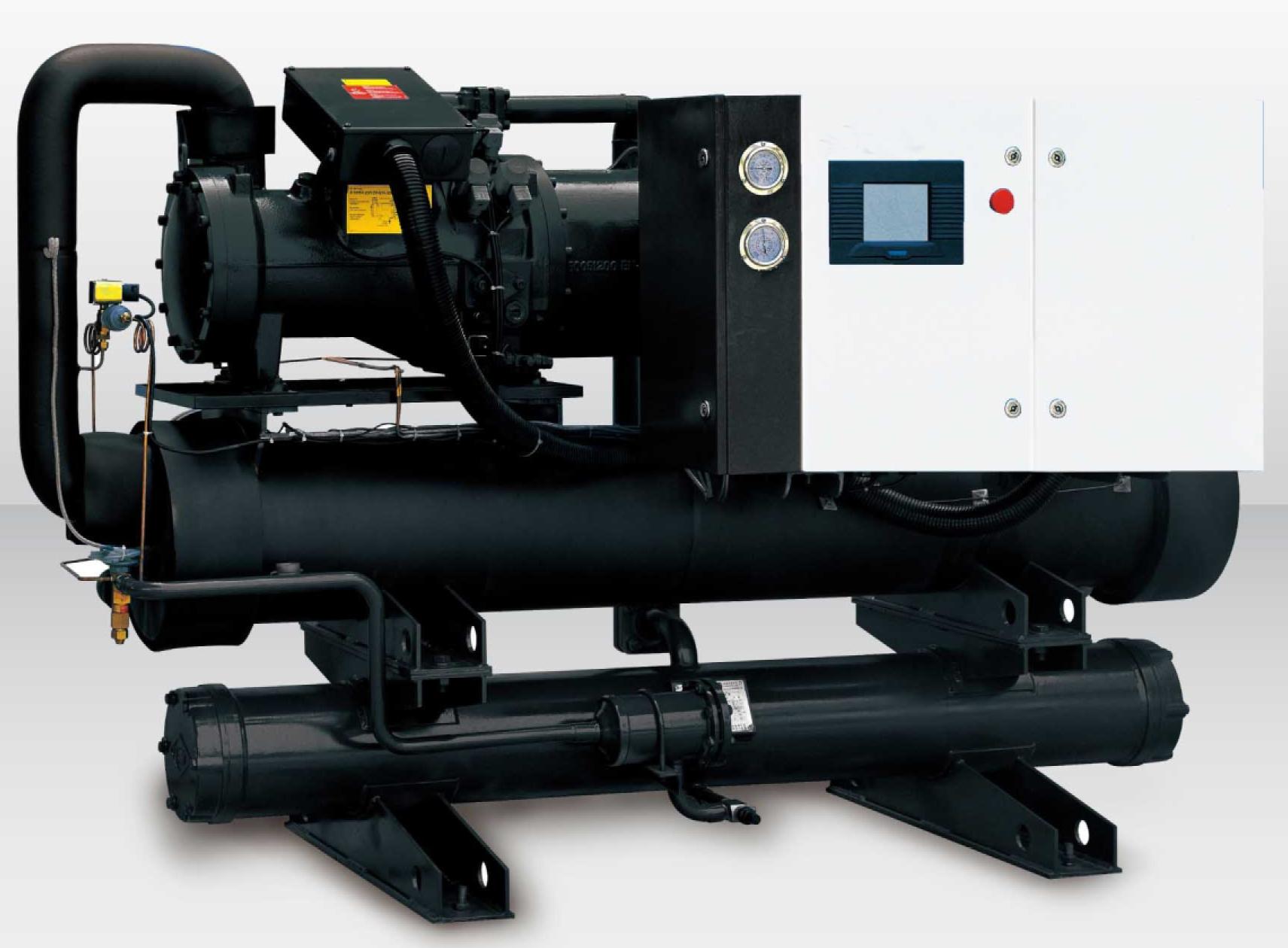Main components of screw chiller

The power of the screw chiller is relatively larger than that of the scroll type, and it is mainly used in central air conditioning systems or large industrial refrigeration. (1) Twin-screw refrigeration compressor: The twin-screw refrigeration compressor is an energy-adjustable oil-injected compressor. Its three continuous processes of inhalation, compression and exhaust are realized by periodic volume changes when a pair of intermeshing female and male rotors rotate. Generally, the male rotor is the active rotor, and the female rotor is the driven rotor. Main components: double rotor, body, main bearing, shaft seal, balancing piston and energy adjustment device. The capacity is 15-100% stepless adjustment or two or three-stage adjustment, which adopts the hydraulic piston to increase or decrease the load. Conventional use: both radial and axial bearings are rolling bearings; the open type is equipped with an oil separator, oil storage tank and an oil pump; the closed type provides differential pressure for lubrication, oil injection, cooling and piston movement that drives the slide valve capacity adjustment. Inhalation process: The gas enters the volume between the teeth of the yin and yang rotors through the inhalation ports. Compression process: When the rotor rotates, the volume between the male and female rotors is connected (V-shaped space). Due to the meshing of the teeth, the volume gradually decreases and the gas is compressed. Exhaust process: The compressed gas is moved to the exhaust port to complete a working cycle. (2) Single screw refrigeration compressor Compression is generated by the meshing of an active rotor and two star wheels. Its three consecutive processes of suction, compression, and exhaust are realized by periodic volume changes when the rotor and star wheel rotate. The rotor has six teeth and the star wheel has eleven teeth. The main components are a rotor, two star wheels, body, main bearing, and energy adjustment device. The capacity can be adjusted steplessly from 10%-100% and three or four-stage adjustment. Inhalation process: The gas enters the rotor cogging through the inhalation port. As the rotor rotates, the star wheel sequentially enters a state of meshing with the rotor slot, and the gas enters the compression chamber (the closed space formed by the curved surface of the rotor slot, the inner cavity of the casing, and the tooth surface of the star wheel). Compression process: As the rotor rotates, the volume of the compression chamber continues to decrease, and the gas compresses until the front edge of the compression chamber turns to the exhaust port. Exhaust process: After the front of the compression chamber is turned to the exhaust port, the exhaust starts to complete a working cycle. Due to the symmetrical arrangement of the star wheel, the cycle will be compressed twice every time it rotates, and the displacement will be twice that of the aforementioned cycle.


